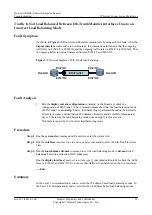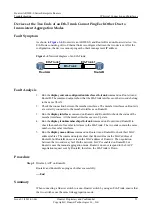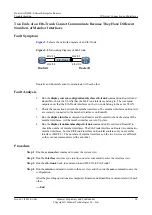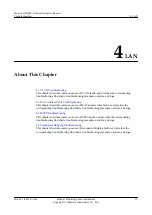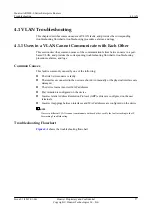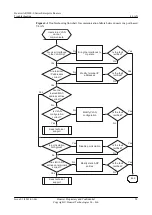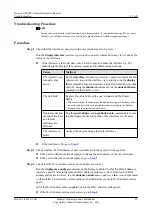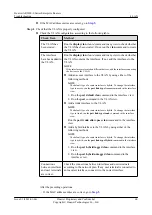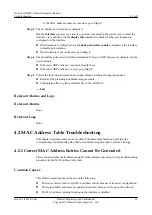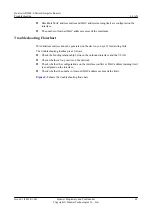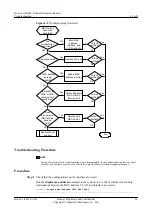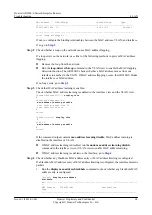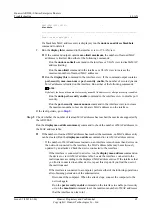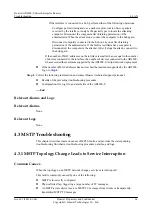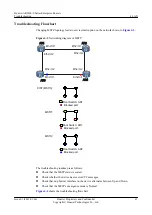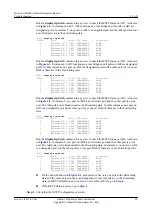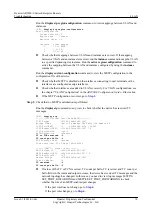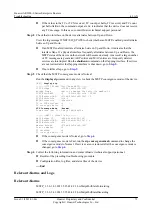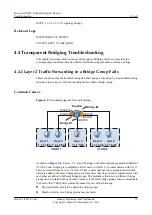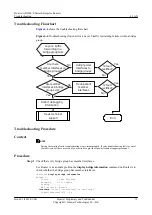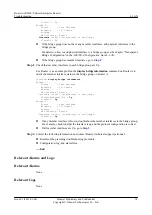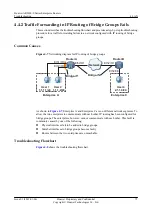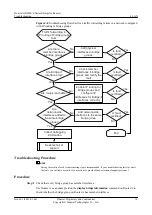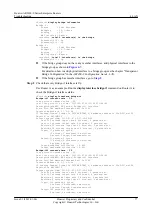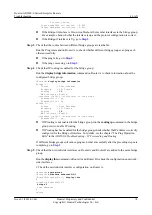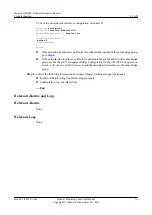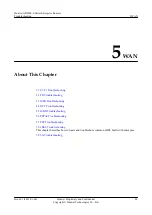
–
If the interface is connected to a hub, perform either of the following operations:
–
Configure port mirroring and use a packet capture tool to observe packets
received by the interface. Analyze the packet types to locate the attacking
computer. Disconnect the computer after obtaining permission of the
administrator. When the attack stops, connect the computer to the hub again.
–
Disconnect computers connected to the hub one by one after obtaining
permission of the administrator. If the fault is rectified after a computer is
disconnected, the computer is the attacker. After it stops the attack, connect it to
the hub again.
–
If the number of MAC addresses on the interface is smaller than or equal to the number
of devices connected to the interface, the number of devices connected to the AR2200-
S has exceeded the maximum supported by the AR2200-S. Adjust network deployment.
l
If the number of MAC addresses has not reached the maximum supported by the AR2200-
S, go to
Step 6
Collect the following information and contact Huawei technical support personnel.
l
Results of the preceding troubleshooting procedure
l
Configuration file, log file, and alarm file of the AR2200-S
----End
Relevant Alarms and Logs
Relevant Alarms
None.
Relevant Logs
None.
4.3 MSTP Troubleshooting
This chapter describes common causes of MPLS faults, and provides the corresponding
troubleshooting flowcharts, troubleshooting procedures, alarms, and logs.
4.3.1 MSTP Topology Change Leads to Service Interruption
Common Causes
When the topology on an MSTP network changes, services are interrupted.
This fault is commonly caused by one of the following:
l
MSTP is incorrectly configured.
l
Physical links flap, triggering a large number of TC messages.
l
An MSTP-aware device receives MSTP TC messages from clients or transparently-
transmitted MSTP TC messages.
Huawei AR2200-S Series Enterprise Routers
Troubleshooting
4 LAN
Issue 01 (2012-01-06)
Huawei Proprietary and Confidential
Copyright © Huawei Technologies Co., Ltd.
66

